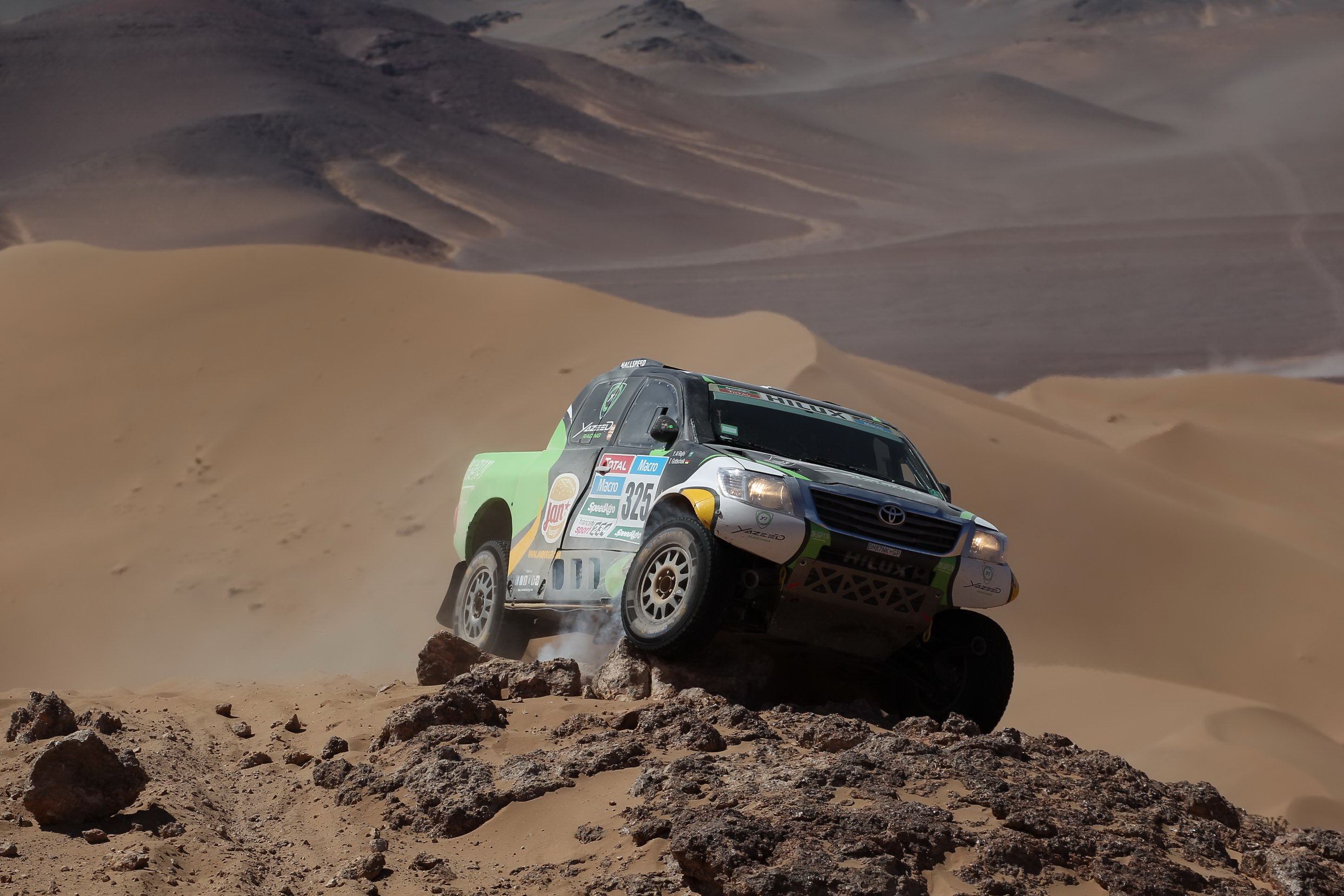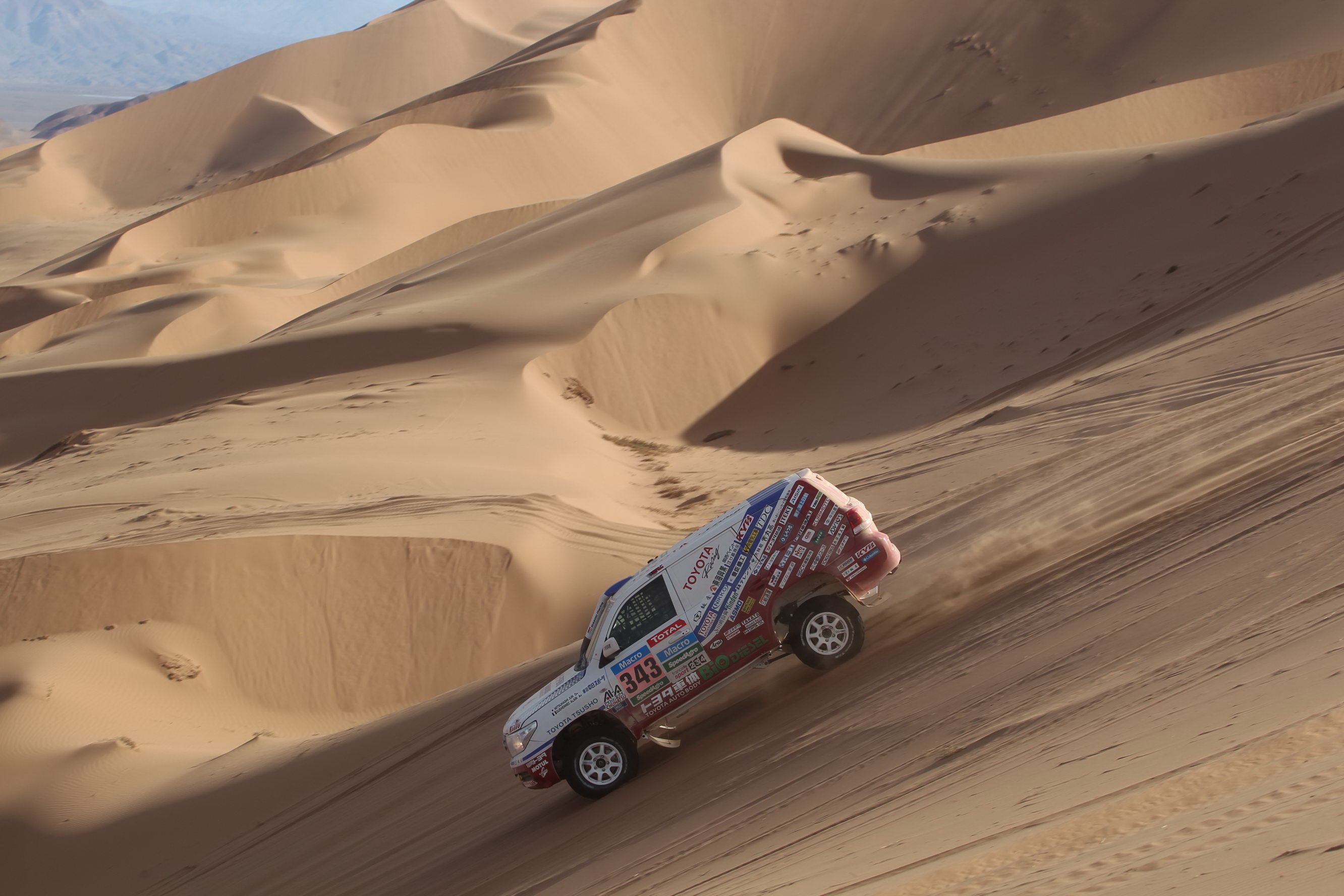Leaving Argentina for Chile across the Andes where Rocky Roads and 100 km of Sand Dunes Await.

Early in the morning at 6:14, the top ranked driver left the bivouc followed by the rest of the field that left in turn according to their ranking. Today they climbed to 4,800 m to cross the Andes and enter Chile. At first, they covered a long Liaison Section, 594 km, for nearly seven hours, then they tackled the 315-km SS (Special Stage) waiting for them in Chile.
The first half of the SS is a road littered with rocks where tire punctures can easily occur. About 100 km of the last part of the SS is sand dunes. GINIEL DE VILLIERS (#303 IMPERIAL TOYOTA), who left the bivouac 2nd, was aggressively chasing ORLANDO TERRANOVA (#305 MONSTER ENERGY RALLY RAID TEAM) when ORLANDO suddenly stopped ahead of him due to a problem with his machine. GINIEL took the lead. If there are clear wheel tracks in a dune, drivers can easily proceed without being buried in sand dust. Usually dunes are disadvantageous for the lead vehicle because it has to blaze a trail which the other will follow. Even so, GINIEL held the lead to the SS finish line. YAZEED ALRAJHI (#325 YAZEED RACING) followed him and finished 2nd. Spectators applauded loudly when the two HILUXES approached the end of the SS one behind the other. GINIEL and YAZEED completed the stage in 3rd and 4th place according to their times. GINIEL had to run the dunes ahead of the other vehicles and had to be careful not to get a flat at the beginning. These factors affected his time.
Tomorrow, they will head north on a route that includes an up and down 458-km high speed SS where the elevation fluctuates by 2,000 m.

How Is Customs and Immigration Clearance Conducted?
People involved in the Auto Category of the DAKAR 2015 often cross borders, from Argentina to Chile via the Andes, from Chile to Bolivia, from Bolivia to Chile, and from Chile to Argentina via the Andes again. Several thousand people including competitors, mechanics, media people and officials have to cross a border at the same time. It would take all day if each person were examined. So how is the clearance conducted?
Customs and Immigration branch offices of the countries concerned are established at the bivouacs on the day before the crossing so that procedures for entering and leaving the countries are handled at the same time in one tent. No troublesome customs clearance procedures are required for vehicles because the organizers provide all necessary documentation for vehicles to customs offices. (Of course, some documents such as packing lists must be prepared and submitted to the organizers in advance.) The organizers' ability to establish such a system is an indication of the high regard accorded to the Dakar Rally.